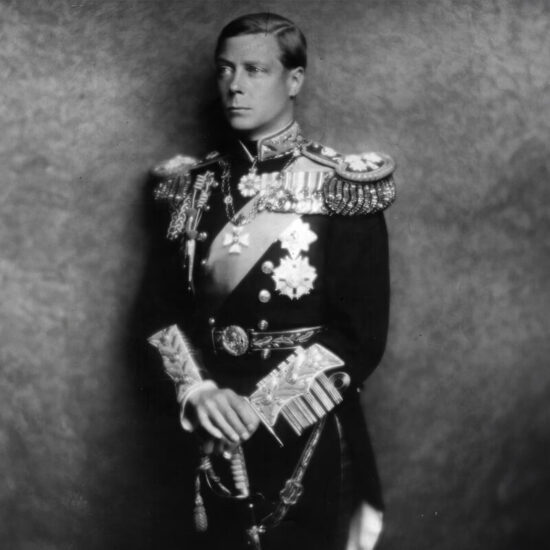The second episode of the Anglotopia podcast continues the tale of an ambitious journey from Land’s End to John O’Groats, picking up where the premiere left off. This installment covers the middle portion of the trip, from Bristol through Northern England to the Scottish border, revealing both the challenges and rewards of undertaking such an extensive British road trip.
The Journey Begins: Castle Coombe
After collecting their rental car at Bristol Airport—a somewhat confusing experience that involved navigating unclear signage and sitting in traffic for an hour—the couple headed to their first stop: Castle Coombe in Wiltshire. This village, consistently ranked among Britain’s most beautiful, offered something increasingly rare in our modern world: complete silence.
Nestled in a valley surrounded by hills, Castle Coombe exists in a bubble of tranquility, free from the intrusion of motorway noise or train sounds. The loudest disturbances are occasional vans navigating the narrow streets or horses clip-clopping past. The village itself is tiny—just two streets—but its beauty is undeniable.
The travelers stayed at the Castle Hotel, a traditional coaching inn that offers character-filled rooms with antique four-poster beds and curved glass windows. At £129 per night, it represents the kind of historic property experience they recommend splurging on at least once during a British trip. The internet, surprisingly, was blazing fast—a welcome change from the connectivity struggles they’d faced in Cornwall.
British Motorway Services: An Unexpected Delight
One of the more surprising discoveries was the quality of British motorway service stations. Unlike American rest stops, which typically consist of basic facilities and perhaps a vending machine, British services resemble small shopping centers or airport terminals. The one they visited featured two Starbucks locations, grocery stores, clean bathrooms, and numerous food options.
However, this convenience comes at a price—literally. Everything is overpriced, especially petrol. The seasoned travelers learned to use GPS to find cheaper fuel stations off the motorway, only stopping at services for necessities.
Hardwick Hall: More Glass Than Stone
The journey north included a stop at Hardwick Hall, an Elizabethan masterpiece built by the formidable Bess of Hardwick. This woman married up four times, accumulating such wealth and power that she rivaled Queen Elizabeth I. Her house, famous for having “more glass than stone,” was revolutionary for its time when glass was expensive and heavily taxed.
The most impressive feature is the long gallery with its walls of windows—an architectural marvel that creates one of the most incredible interior spaces imaginable. Despite pouring rain that turned the parking area into a muddy field, the visit was worthwhile, offering both historical insights and a decent lunch at the National Trust café.
York: A City Worth Exploring
The Grand Hotel York proved to be a highlight of the accommodation choices. Housed in the former railway offices building, it offers rooms with 20-foot ceilings and modern amenities like rainfall showers with built-in speakers. At less than the Castle Coombe rate, it provided exceptional value with its spa, pool, and proximity to York’s attractions.
York Minster, despite scaffolding obscuring some views due to organ restoration, remains a world-class cathedral. The chapter house, with its ornate carved faces, particularly impressed. However, the experience was somewhat marred by tourists ignoring clear “no photography” signs and even climbing onto roped-off areas for selfies.
The famous Shambles, inspiration for Harry Potter’s Diagon Alley, proved both enchanting and disappointing. While the medieval street with buildings whose eaves nearly touch overhead is undeniably picturesque, nearly every shop now sells Harry Potter merchandise. What was once a historic market street has become somewhat Disney-fied, catering heavily to the tourist trade.
Durham: In Search of Roots
Durham held special significance as the ancestral home of one traveler’s family. Bill Bryson called it “the most perfect English city,” and it lived up to that description. The Hotel Indigo, housed in another converted university building, offered a luxurious experience with its rotunda bar and restaurant.
The search for 10 Shincliff Lane led to an encounter with a helpful postman who’d worked the route for 30 years. Though the exact address no longer existed, they identified a medieval cottage at 1 Shincliff Lane as the likely ancestral home. The village of Shincliff itself proved to be quintessentially English—peaceful, beautiful, and the kind of place that helps explain a lifelong obsession with Britain.
Durham Cathedral, despite prohibiting photography, provided a moving experience. The Norman architecture and the practicing choir created an atmosphere that forced visitors to be present rather than viewing everything through a camera lens.
The Northern Route
The journey continued through Alnwick, home to the famous Barter Books—the secondhand bookstore where the “Keep Calm and Carry On” poster was rediscovered. Housed in an old railway station, it’s impressive but can be overwhelming when crowded. Prices lean toward the expensive side, perhaps capitalizing on its tourist attraction status.
Time constraints meant skipping Alnwick Castle, but the drive up the eastern coast to Edinburgh proved to be one of the trip’s highlights. The road hugs the coastline, offering views of windswept castles, the parallel railway line, and the North Sea. This stretch showcased some of the most beautiful scenery of the entire journey.
Lessons from the Road
Several practical insights emerged from this portion of the trip:
Accommodation Strategy: Booking hotels with on-site restaurants proved invaluable after long driving days. Including breakfast in the room rate saved both money and time, while having dinner options meant not having to search for restaurants in unfamiliar towns after dark.
Pacing: The ambitious itinerary of breakfast, sightseeing, driving, and more sightseeing proved exhausting. Future trips might benefit from a more relaxed pace or longer stays in each location.
Historic Properties: Staying in converted historic buildings—former railway offices, university buildings, coaching inns—added immeasurably to the experience, even if they cost more than chain hotels.
Flexibility: Being willing to make spontaneous stops, like at Fountains Abbey, led to some of the trip’s best moments. The ruined abbey, with its massive underground areas and wool heritage, provided an unexpected highlight.
Research Value: Having specific goals, like finding ancestral homes, added personal meaning to the journey beyond simple tourism.
Looking Ahead
As they crossed into Scotland at the historic border, the travelers had covered significant ground—from the Cotswolds through Yorkshire and Northumberland. But this whirlwind tour also highlighted how much more there is to explore. Places like Bamburgh Castle, the Lake District, and more of York itself went unseen, providing ample reason for return visits.
The journey demonstrated both the possibilities and limitations of attempting to cover such vast distances in limited time. While they achieved their goal of experiencing Northern England, the trip’s pace meant only getting tastes rather than full meals of each destination. Yet these tastes were enough to inspire future, more focused explorations of the regions that captured their imagination.
As the podcast promises to continue with the Scottish portion of the journey, it’s clear that this road trip, exhausting as it was, succeeded in its primary goal: expanding horizons beyond familiar destinations and discovering new favorite places in Britain’s diverse landscape.
Free Podcast Newsletter
Subscribe to our special podcast newsletter below and never miss the latest episode of the Anglotopia Podcast.




